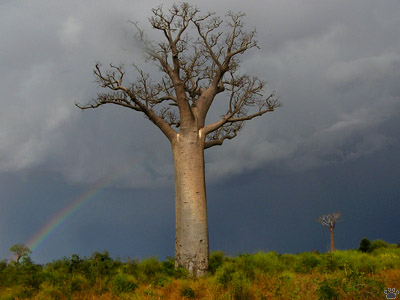
Zabe, or African, baobabs (Adansonia digitata) in a supercell thunderstorm, Parc National Zombitsi.
Madagascar - Part 11
Madagascar has almost as many plant species as North America, and twice as many as Europe. Some of its 300 endemic genera of higher plants are very ancient and don't have any close relatives elsewhere.
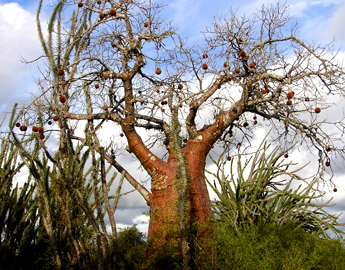
Za baobab (A. za) with Alluaudia trees in the background, Reniala Nature Reserve. |
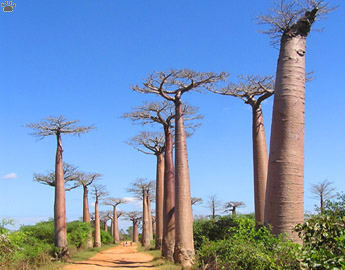
Reniala baobabs (A. grandidieri) of Baobab Alley, Morondava. |
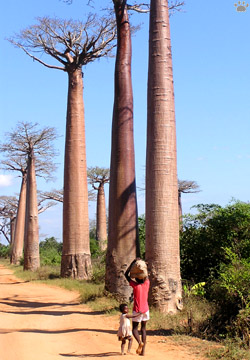
Reniala baobabs of Baobab Alley, Morondava. |
Most people think of baobabs as African. In fact, six out of eight species are endemic to Madagascar; one is shared with Africa, and one occurs in Australia. It is usually claimed that the African species, A. digitata, has been introduced to Madagascar by Arab traders, but I can bet it has actually originated here and colonized Africa naturally. All seven island species grow in the western coastal areas. They are very important to wildlife and people alike. They have beautiful flowers, which I mostly didn't see: wrong season. |
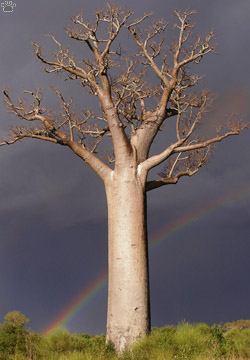
Zabe baobab in a thunderstorm, PN Zombitsi. |

Fony baobab (A. rubrostipa), Reniala NR. |
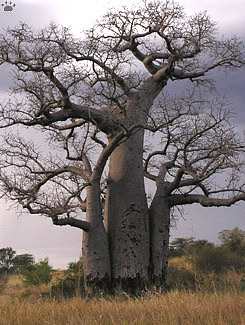
Renida baobab (A. madagascarensis), Toliara. |
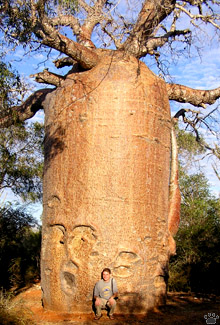
Fony baobab (A. rubrostipa), Reniala NR. |
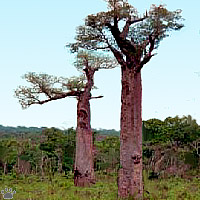
Perrier's baobabs (A. perrieri), Ambondromifehy. |
In the past there were many baobab forests on Madagascar, but now most baobabs survive as lone trees or in small groups surrounded by pastures. Two northern species are endangered, and one of them (left) is on the verge of extinction. Reniala Nature Reserve near Ifaty is the last place to see real old-growth baobab forest with many large trees. More famous is Baobab Alley near Morondava - probably the most photographed place on the island. |
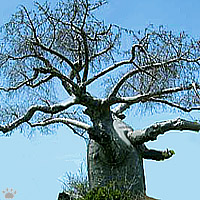
Bozy baobab (A. suarezensis), Diego Suarez. |
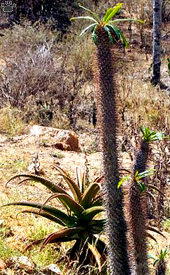
Aullaudia sp. and Aloe sp., Ifaty. |

Didierea sp. and Euphorbia sp., Toliara. |
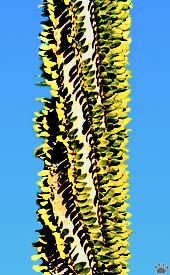
Aullaudia sp., Reniala NR. |
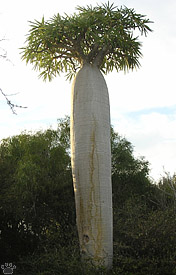
Pachypodium geayi, Toliara. |
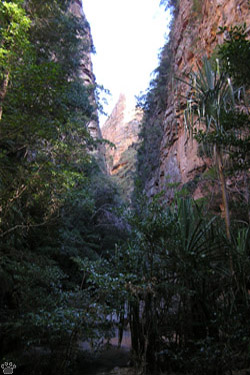
Pandanus trees grow in Canyon de Makis (Lemur Canyon),
hidden in dry mountains of Parc National L'Isalo. |
Spiny forests of southern and Madagascar (above) look as weird as it gets. They are dominated by either milkweed (Euphorbia) and aloe (Aloe) trees, or by endemic Alluaudia and Didierea plants, which look very similar to ocotillos (Fouquieria) of North American deserts. Also common are bottle-shaped trees, such as large Pachypodium geayi.
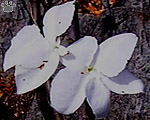
Pachypodium decaryi flowers,
Parc National L'Ankarana. |
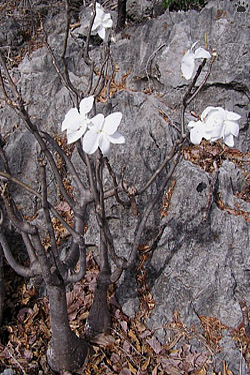
P. decaryi growing on a tsingy,
Parc National L'Ankarana. |
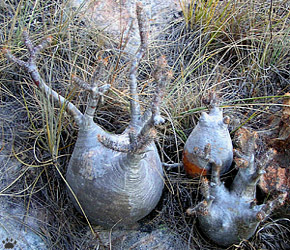
Pachypodium rosulatum, Parc National L'Isalo. |
Other species of Pachypodium grow in tsingy (karst areas), or in the granite mountains of the Hauts Plateaux (High Plateaus) of central Madagascar. Some are more weird-looking than others. |
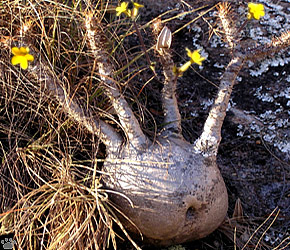
P. rosulatum, Parc National L'Isalo. |
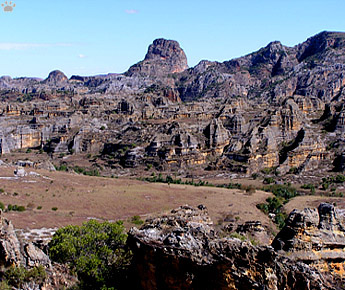
Eroded granite mountains, Parc National L'Isalo. |
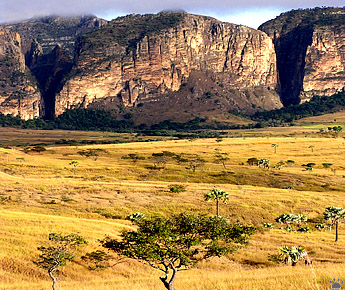
Palm savanna, canyons and mountains, Parc National L'Isalo. |

P. baroni, Parc National L'Ankarana. |
The central highlands of Madagascar have very little wildlife left due to deforestation and frequent fires, but there are lots of interesting plants in more remote areas, such as granite mountaintops and canyons. Deciduous forests of the northwestern coast also have some interesting Aloe, Pachypodium and other unusual plants. |
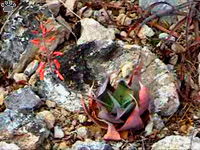
Aloe deltoideadonta, Parc National L'Isalo. |
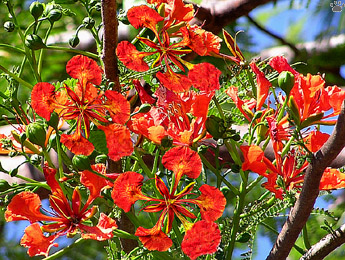 |
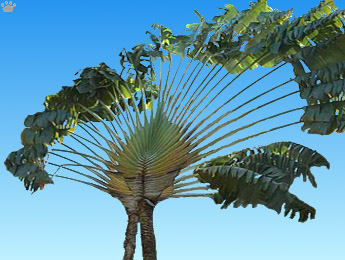 |
| Many plants from Madagascar rainforests are now grown in tropical parks and gardens worldwide. Flamboyan tree (Delonix regia, left) has naturalized in the West Indies, and is now one of the most common trees in Puerto Rico. "Traveler's palm" (Ravenala madagascarensis, right) has naturalized in India. |

Clitoria
heterophylla,
Ambondromifehy. |

Mammea
madagascarensis,
PN L'Ankarana. |
Rainforests of eastern Madagascar are a very different world. Even during the dry season, it can sometimes rain for weeks here. Large pandanus plants are very common. Some of the island's ninety endemic species are very unusual: they look like conifers (right), or grow underwater. The most diverse family is orchids: almost a thousand species. |

Pandanus
coniferoides, PN
Montagne d'Ambre. |
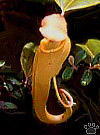
Nepenthes
madagascarensis,
PN Montagne d'Ambre. |
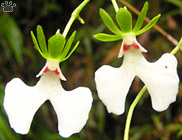
Oenia oncidiflora, PN Andasibe-Mantadia. |
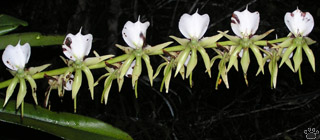
Angraecum eburneum, Parc National Andasibe-Mantadia. |
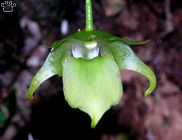
Aeranthes longipes, PN Andasibe-Mantadia. |

Dipcadi sp., PN Marojejy. |
Most orchids of Madagascar are epiphytes, but terrestrial species are usually more easy to find. February is the best month to look for them, but you can find some flowers at any time, especially in permanently wet cloud forests. |

Sobennikoffia robusta, PN Masoala. |
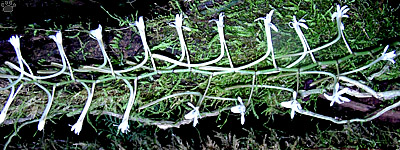
Unidentified orchid, PN Ranomafana. |
Part 12: People
Back to Part 10
Home
|